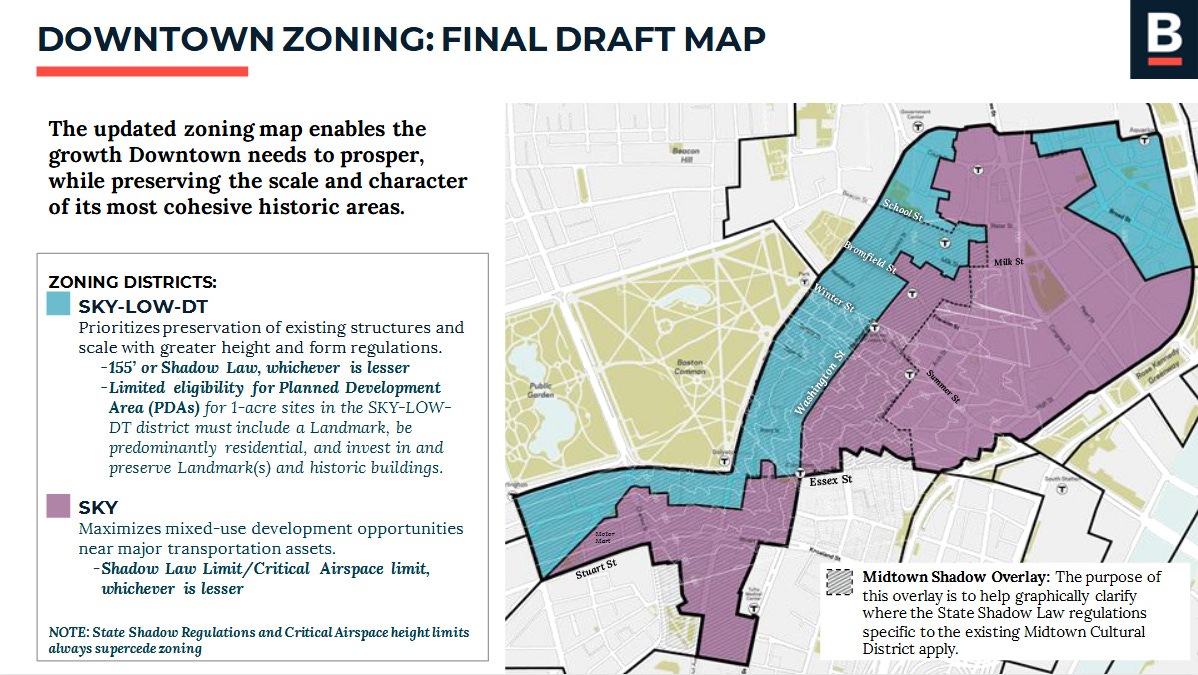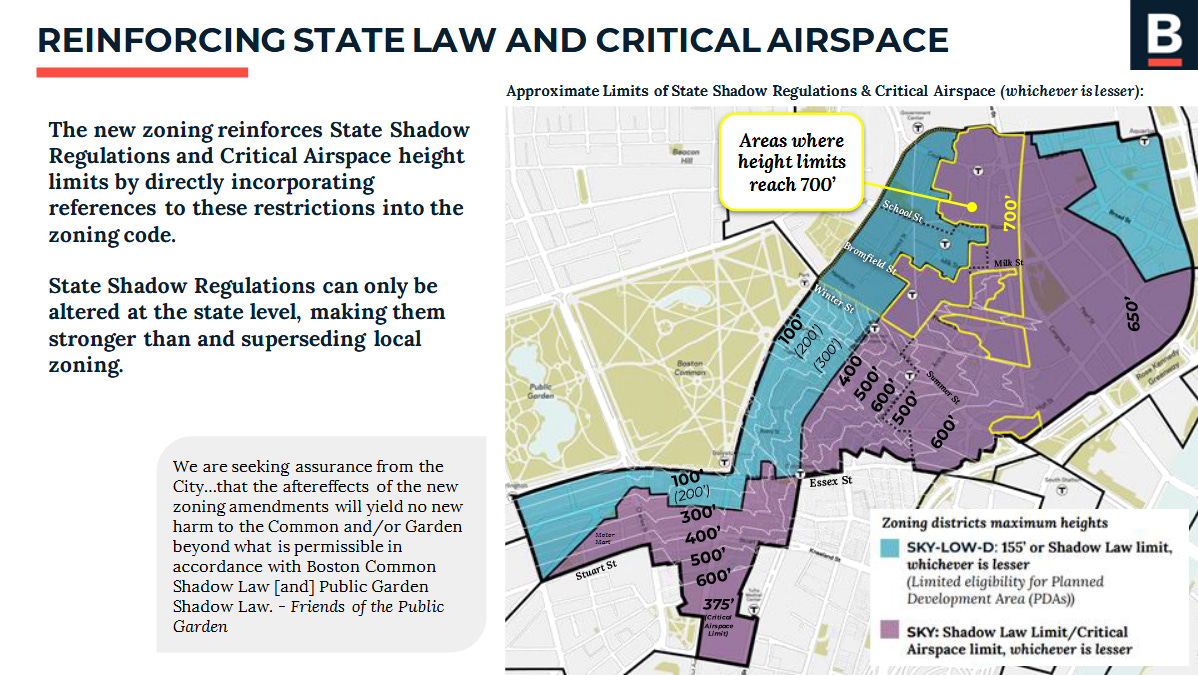In Defense of New Downtown Zoning
Why I think PLAN: Downtown is essential to meeting our goals of population growth, historic preservation and economic development in this critical moment for our city.
Last week, I joined the public meeting of the latest draft of PLAN: Downtown to share my perspective on the proposed zoning changes to the urban core of our city. Logging onto show my support, I knew how controversial this stance could be, and how many leaders across the city have made their opinion of opposition known. While I have been following the discussion closely, I hadn’t weighed in up until this point out of respect for the elected officials representing the Downtown neighborhood. However, the future of Downtown matters to all of us, and as a city, we must lead. This plan comes at a pivotal moment, and I believe it’s an essential step toward creating a strong and vibrant Downtown and a prosperous future.
Public officials and resident working groups have spent six years shaping this plan and made revisions in response to recent public feedback. Some have raised questions about the process. I understand the frustration when plans appear without sufficient consultation, but I have seen clear evidence that the feedback from the community has influenced the revisions. Nothing is perfect, but this has resulted in a plan that supports much-needed housing and reinvestment while preserving the character of historic districts and the integrity of green spaces, such as Boston Common and the Public Garden.
These historic areas and public spaces are deeply important to me. As a newcomer in Beacon Hill finding my way as a young professional 10+ years ago, it was the city’s parks—especially the Common and the Public Garden—that first gave me a sense of belonging. These beloved landmarks and the historic buildings surrounding them are integral to Boston’s history and culture. I know how much they mean to residents across our neighborhoods. Drawing over a million tourists each year, the Boston Common also brings vital tourism revenue to the downtown area.
Downtown Boston is an important economic engine for our city, the Commonwealth, and the broader New England region. This plan comes at a crucial time.
The urban core of our city has not been the same since the pandemic. Offices remain vacant and commercial foot traffic has fallen, hurting restaurants and retail stores. According to the Downtown Boston Neighborhood Association’s 2024 survey, residents who live and work there had reported feeling less safe walking around. I’ve recently joined my fellow City Councilors, A-1 police, the downtown community and other stakeholders on ‘safety walks’ to activate the area, and address any concerns that continue to weigh on downtown.
Office vacancies have caused commercial property values to plummet. Roughly 17% of office building space remains vacant, threatening billions of dollars in potential revenue loss from property taxes over the next five years. With over 70% of next year’s city budget funded by property taxes, we are counting on this revenue stream to sustain essential city services.
For Boston to continue to lead the Northeast as an economic powerhouse and a safe and vibrant place for our residents to live and work, we need to make investments that bring people, revenue, and opportunity back to Downtown. The stewards of Downtown safety and vibrancy, The Downtown Boston Alliance, have come out in support of the plan, and their recent work of guiding 20 new business leases, 9 of which are City of Boston SPACE grantees, in the neighborhood in 2025 underscores how important it is for the city to support Downtown’s revitalization.
PLAN: Downtown offers new incentives for residential development and reinvestment that will enhance and preserve Boston’s architectural heritage. It encourages housing development (including 20% income-restricted units), enables new uses for office space, and creates jobs in construction and related industries. The economic impact of this revitalization will ripple across sectors, drawing more tourism, increasing foot traffic, and bringing in revenue for downtown restaurants, retail stores, and local businesses.
I understand more than any other Councilor, representing 40% of the Historic Districts in Boston, the concerns about preserving the historic architecture and buildings in this area. As the City Council’s Chair of Planning, Development and Transportation, I shepherd landmarks through the City Council process at almost every Council meeting. Hearing that residents felt that the January draft of PLAN: Downtown betrayed recommendations to preserve the scale and architecture of the historic blocks of the Ladder District, the Planning Department responded by revising the plan to address these concerns. They removed previously proposed areas of extreme height and expanded lower-scale height zones in important historic areas including along Washington Street, the Ladder Blocks, around the Old South Meeting House, and Park Plaza. This effectively mitigated unintentional loss of character that might have resulted from the initial plan, and in my opinion represents a good balanced approach to how the city needs to respond to feedback around preserving our important historic assets.
The zoning plan also strengthens legal protections for the Boston Common and Public Garden by explicitly referencing the state’s shadow laws.
The state shadow laws exist for a reason. The city does not have the political will—nor should it—to defy them. In 2017, we saw what happens when exceptions are made. The City Council and former Mayor Walsh used a Home Rule Petition to bypass state shadow laws to approve the Winthrop Square Tower Plan. Former District 8 Councilor Josh Zakim, District 7 Councilor Tito Jackson and then-City Councilor Michelle Wu were the only voices against it. I do not support making any more exceptions to state shadow laws and on Wednesday, I will be introducing a resolution, which I filed today, to ensure that our body is on the record in support of upholding these protections.
Without thoughtful development, our historic buildings often lack the investment they need to be maintained, adapted, and preserved for future generations. In District 8, we’ve seen the consequences of inaction. We’ve lost landmarks not to new construction, but to demolition by neglect. Preservation requires investment, and this plan offers a framework to support both our past and our future.
This zoning plan is not separate from the larger national challenges cities are facing. Whether it's immigration, infrastructure, or housing vouchers, Boston is stepping up where state and federal support has fallen short. If we want to lead, and continue to be the strong, vibrant city that our residents can count on, we need to grow.
PLAN: Downtown provides a framework for that growth. It encourages new housing and economic reinvestment while preserving and protecting the historic architecture and public spaces that make Boston special. Every future project under this plan will be required to go through the Article 80 review process, which includes opportunities for public input and thorough analysis to ensure that new development meets these standards and achieves these goals.
In 2023, during the Mayor’s State of the City address, she stated “a goal of Boston is to sustainably reach a population of 800,000 residents – with the housing and schools, parks and public transit to support that growth.” Without Downtown being part of that growth, I don’t know how we could possibly accomplish this. I want our city to thrive and I want to see Boston reach its full potential. We need development in Downtown to create new housing and jobs, generate revenue through tourism and property taxes, and revitalize our streets. My belief is that PLAN: Downtown provides a way to do this that combines incentives for new buildings along with adaptive reuse.
It’s easy to dream about the Boston we want to see, one that is growing, that has all the amenities and resources to proactively serve our communities, but it’s hard to support the necessary regulatory changes to accomplish it. This plan is essential.
Sharon Durkan is the Boston City Councilor for District 8, which spans the West End, Beacon Hill, Back Bay, Kenmore-Fenway, Audubon Circle and Mission Hill.








I support the downtown plan. I'm baffled by the objections to height. We live in a city. There are few vacant parcels. We either build up or out. And I think sprawl is the worst kind of city planning. I'd rather have height. And if you build densely with shops and services around, you don't need cars, so that takes care of one of the stupidest city planning activities -- trying to get cars around. We need to get people around instead. I live in a neighborhood in which supposedly half the residents don't have a car. That is bliss.
Ms. Durkan: Thank you for posting this information about the workings and plans of our City Council. In my 50+ years in Boston, you're the first Councilor to communicate in such detail about the workings of our city. While I don't use Downtown as much as I used to - I live on the cusp of Mission Hill and The Fenway - it still matters to me that the vibrancy of the inner city is maintained and enhanced. If we let Downtown go to seed, then we lose quintessential Boston. Keep up the good work!